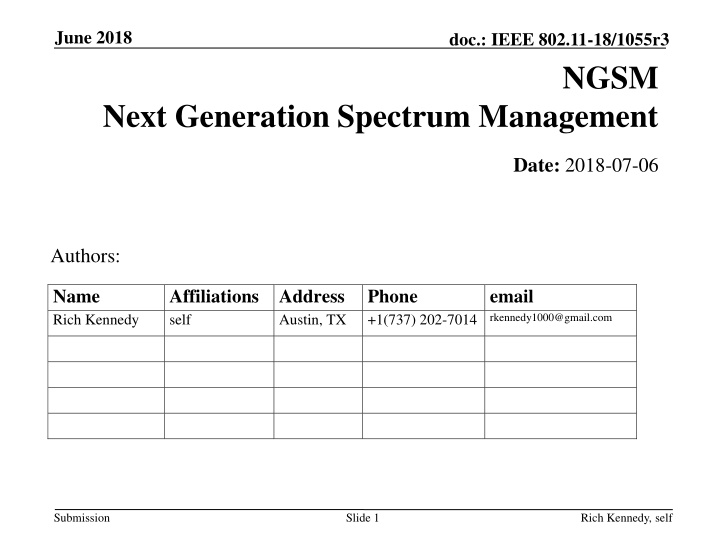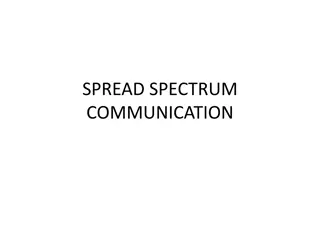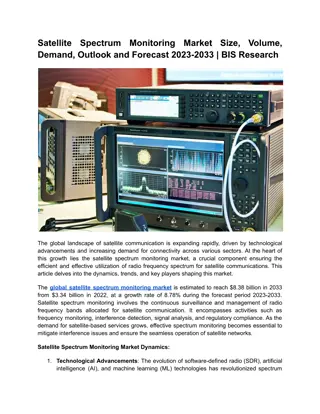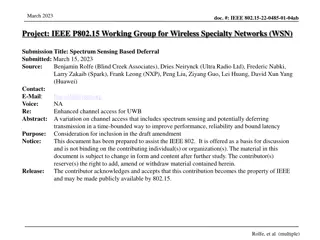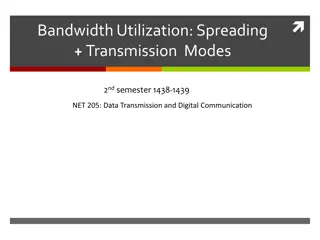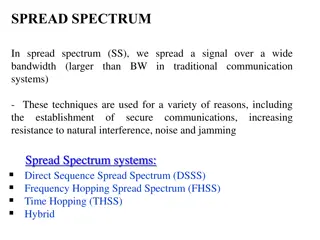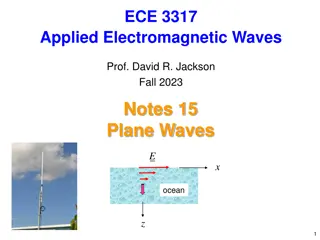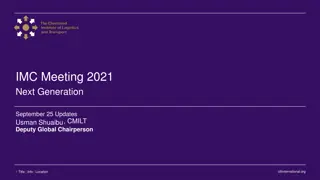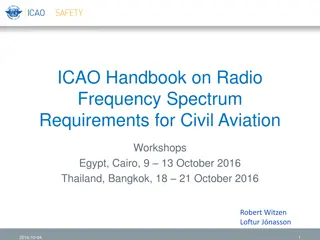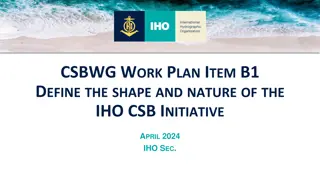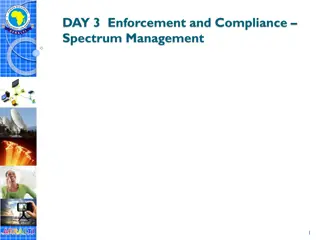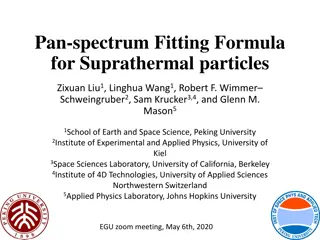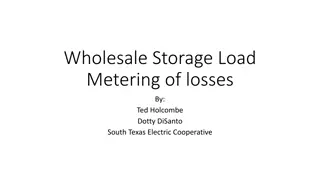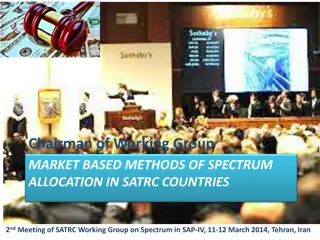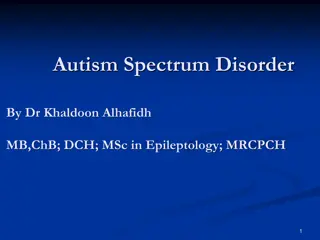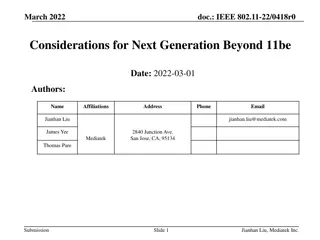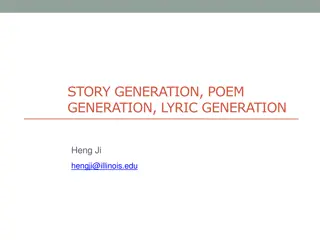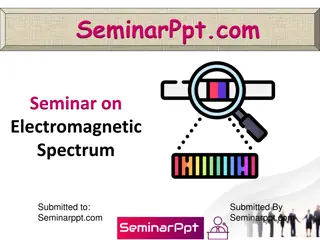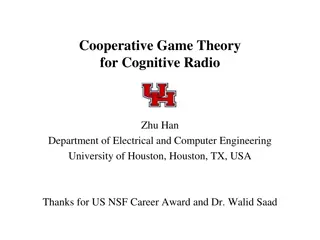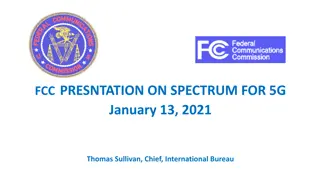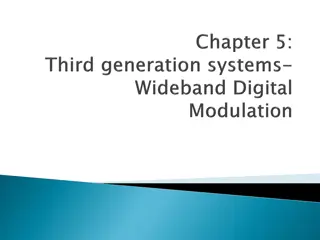Next Generation Spectrum Management Initiative Overview
Rich Kennedy presented on the need to change spectrum management practices within IEEE 802, addressing the results of straw polls conducted and proposing further investigation into Multi-band White Space feasibility. The presentation also highlighted the interest in advocating for an AI-managed spectrum database. Additionally, it covered DARPA's XG project's efforts to utilize unused spectrum through advanced sensing capabilities.
Download Presentation

Please find below an Image/Link to download the presentation.
The content on the website is provided AS IS for your information and personal use only. It may not be sold, licensed, or shared on other websites without obtaining consent from the author.If you encounter any issues during the download, it is possible that the publisher has removed the file from their server.
You are allowed to download the files provided on this website for personal or commercial use, subject to the condition that they are used lawfully. All files are the property of their respective owners.
The content on the website is provided AS IS for your information and personal use only. It may not be sold, licensed, or shared on other websites without obtaining consent from the author.
E N D
Presentation Transcript
June 2018 doc.: IEEE 802.11-18/1055r3 NGSM Next Generation Spectrum Management Date: 2018-07-06 Authors: Name Rich Kennedy Affiliations Address self Phone +1(737) 202-7014 rkennedy1000@gmail.com email Austin, TX Submission Slide 1 Rich Kennedy, self
June 2018 doc.: IEEE 802.11-18/1055r3 Introduction In San Diego I introduced the need for a change in the way spectrum is managed Straw polls indicated interest and the need for more information This presentation provides additional information and a plan for working with regulators to progress the initiative Submission Agenda Slide 2 Rich Kennedy, self
June 2018 doc.: IEEE 802.11-18/1055r3 Background Document 11-18/1055r3 was presented at the 802.11 WNG SC meeting in San Diego The following three slides show the results of the strawpolls conducted There is general agreement that the work should be conducted within 802; not necessarily 802.11 Although the vote on 802 regulator advocacy was negative, the vast majority wanted more information Submission Slide 3 Rich Kennedy, self
June 2018 doc.: IEEE 802.11-18/1055r3 Straw Poll Do you believe that a group or groups within IEEE 802 should investigate the feasibility of Multi-band White Space? YES - 49 NO - 13 More information required to make a decision? - 53 Submission Slide 4 Rich Kennedy, self
June 2018 doc.: IEEE 802.11-18/1055r3 Straw Poll Which group(s) should do this work? 802.11? - 31 802.22? - 0 Both - 2 Other - 24 Submission Slide 5 Rich Kennedy, self
June 2018 doc.: IEEE 802.11-18/1055r3 Straw Poll Should IEEE 802 advocate to regulators, for an AI managed database for spectrum management? YES - 6 NO - 15 More information required to make a decision? - 76 Paul Nikolich: There is another IEEE project about AI that Rich may want to co-ordinate with. Submission Slide 6 Rich Kennedy, self
June 2018 doc.: IEEE 802.11-18/1055r3 General White Spaces DARPA Project XG tried to take advantage of unused spectrum www.daml.org/meetings/2005/04/pi/DARPA_XG.pdf Sensing across a range of frequencies could locate unused segments for a specific location and time, i.e. White Spaces Perfect identification of unused spectrum is required, and very difficult using only sensing In 2006, the FCC looked at this WRT the TV bands The digital transition could make a lot of spectrum available for unlicensed use However, the decision to auction the 600 MHz band severely limited the number of available channels Submission Slide 7 Rich Kennedy, self
June 2018 doc.: IEEE 802.11-18/1055r3 Multi-Band White Spaces The limited success of TVWS technology resulted in a loss of interest in all White Spaces The TV bands were a choice of opportunity Based on location and time, there are still vast amounts of White Space, but with technical challenges Meeting technical and regulatory challenges has always been an IEEE 802 focus The key to rethinking White Spaces is identifying the challenges and meeting them The key to success of MBWS is a revamp of the way spectrum is allocated Submission Slide 8 Rich Kennedy, self
June 2018 doc.: IEEE 802.11-18/1055r3 Spectrum Management Future The NTIA spectrum map on the following slide looks very complex, but it represents an aggregation of all US spectrum allocations It does not represent any specific location or time of day A nearly infinite set of maps would be needed to show the available spectrum at any location in the U.S. This problem is the perfect example of how AI can manage the unmanageable To avoid a spectrum deadlock in the next 20 years, we must first convince regulators that this is a requirement and need action now Submission Slide 9 Rich Kennedy, self
June 2018 doc.: IEEE 802.11-18/1055r3 The U.S. Spectrum Map Submission Slide 10 Rich Kennedy, self
June 2018 doc.: IEEE 802.11-18/1055r3 Advantages of AI Managed Spectrum Any location within the managed borders will have its own map and timetable showing frequencies available during all 24 hours of a day Make better use of current unlicensed bands Interference can be better managed Mobile devices can know what frequencies are available where they are AND where they are going Changes, corrections and fine tuning can be done nearly instantaneously Regulatory changes can be incorporated rapidly New technologies can be assured of available spectrum for testing and use Submission Slide 11 Rich Kennedy, self
June 2018 doc.: IEEE 802.11-18/1055r3 Plan for Regulatory Action Begin with the US FCC and NTIA Emails have been sent, but f2f meetings are a must Full industry support will force regulators to take a hard look at it The 6 GHz band sharing initiative is a good example We should ask for a study, which industry will support We need credible projections for spectrum congestion 5, 10, 15 and 20 years in the future Based primarily on urban areas, where spectrum is most needed and in shortest supply Submission Slide 12 Rich Kennedy, self
June 2018 doc.: IEEE 802.11-18/1055r3 Questions? Submission Slide 13 Rich Kennedy, self
June 2018 doc.: IEEE 802.11-18/1055r3 References FCC Ofcom https://www.fcc.gov/general/white-space https://www.ofcom.org.uk/consultations-and-statements/category-1/white- space-coexistence Microsoft http://whitespaces.microsoftspectrum.com/ My documents https://www.linkedin.com/pulse/multi-band-white-space-spectrum-access- rich-kennedy/ https://mentor.ieee.org/802.18/dcn/18/18-18-0060-02-0000-a-future-for- unlicensed-spectrum.pptx Submission Slide 14 Rich Kennedy, self
